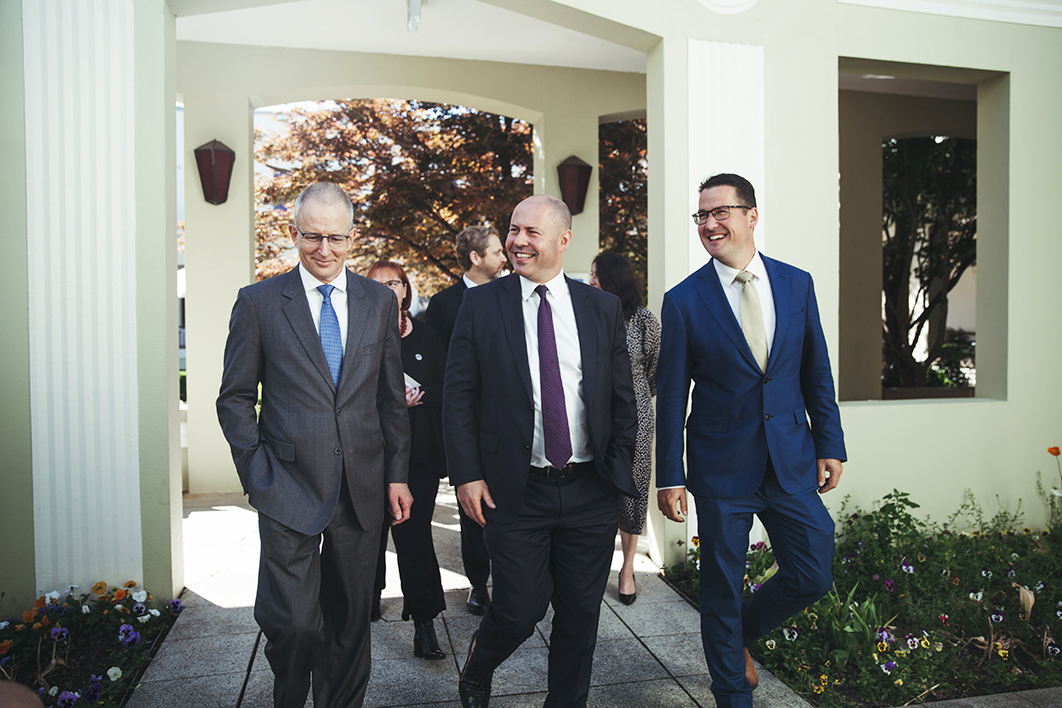The National Film and Sound Archive, which styles itself “Australia’s living archive,” is the guardian of more than a century of national memories documented in films, sound records, audio- and videotape, and digital files. From the 1980s to the early 2000s NFSA projects like The Last Film Search, Operation Newsreel and the MAVIS collection management system made it a global leader. Its expert staff developed international reputations. But with generational change and shifting circumstances its star has dimmed. And like other memory institutions it normally attracts little political attention.
That suddenly changed last Friday when treasurer Josh Frydenberg, communications minister Paul Fletcher and ACT senator Zed Seselja descended on the NFSA’s headquarters in Canberra with the surprise announcement of a $41.9 million funding boost, over four years, for its digitisation program. The announcement also provided funds to digitise the holdings of seven other institutions as well, including the Australian War Memorial, the National Gallery and the National Library. It recognised the essentiality of preserving Australia’s at-risk audiovisual heritage while properly placing the NFSA at the centre of the action. So how good is that?
Has the government found a new enthusiasm for vintage and recent movies and radio programs? Or are there more basic concerns? Following immediately on a disastrous parliamentary session, the good-news story got blanket media coverage and will do no harm at all to the electoral prospects of the ministerial trio, whose seats are all under challenge from high-calibre “Voices of” candidates.
And, in a classic Yes Minister nuance, something vital is missing: a starting date for the cash splash. In the end, it’s really just a statement of intent. I doubt the NFSA will see the colour of the government’s money before polling day. Post-election, if things don’t follow through as announced, it won’t be the fault of Messrs Frydenberg, Fletcher and Seselja. It will be interesting to learn whether Labor and the Greens have begun to focus on national institutions like the NFSA.
The announcement also diverts attention from much more fundamental matters: the integrity of the NFSA’s governance and curatorial standards. In detailed questions on 18 October, independent MP Zali Steggall asked minister Fletcher whether he would seek to amend the NFSA’s legislation to ensure that its board comprised experts with academic and professional backgrounds directly relevant to the institution’s operations, and whether he would fill the two current vacancies against these criteria. Advocacy groups have suggested plenty of candidates he could choose from. The minister has yet to respond.
While its act requires the NFSA to work to the “highest curatorial standards,” the institution no longer specifies which curatorial, technical or ethical standards and codes it adheres to, thereby distancing itself from its international peers. Its collection-development policy lacks depth and detail. Research has stagnated. Relationships have deteriorated. Redundancies have continued to leach away corporate memory and expertise. Rebuilding those lost assets is a task that still awaits attention.
While any funding increase is a plus, the NFSA is much more than a digitisation factory or government-funded YouTube. The selection, protection, documenting, cataloguing and accessibility of the national collection, guided by trained long-term professionals, are as fundamental to our national polity as environmental protection and integrity in public administration. The archive requires sustained ongoing funding — not short-term, opportunistic grants. It needs the continual interest of elected representatives, such as Zali Steggall and Helen Haines, to keep bureaucrats and administrators up to the mark. It is refreshing that they, and others like them, have a vision of Australia that embraces technological change and an aspiration to respect our heritage through good governance.
Finally, there is a worrying hint in all this that digitisation is a once-and-for-all solution for audiovisual heritage generally. It is not. It’s crucial for access, with all its possibilities, but preservation and curation is a separate and much more complex reality than we might assume when we back up our personal data to the cloud. Archival standards require that analogue originals be retained after digitisation for as long as they remain viable. Among other things, digital files must be protected from decay and viruses, and their integrity maintained against the potential manipulation of their content. They must be refreshed regularly and are permanently on life support. It has been said that digital files last forever — or five years, whichever comes first.
The coming election is a time when all those seeking office, whether party-aligned or independent, can rise to this challenge with imagination and a willingness to ensure Australia has a world class NFSA that we can all be proud of. •




